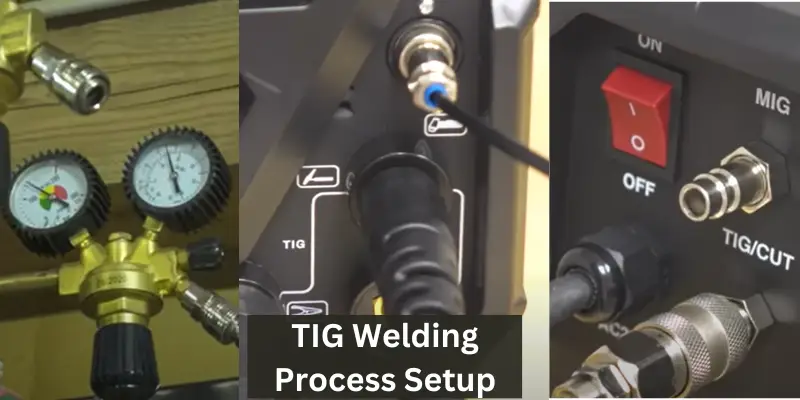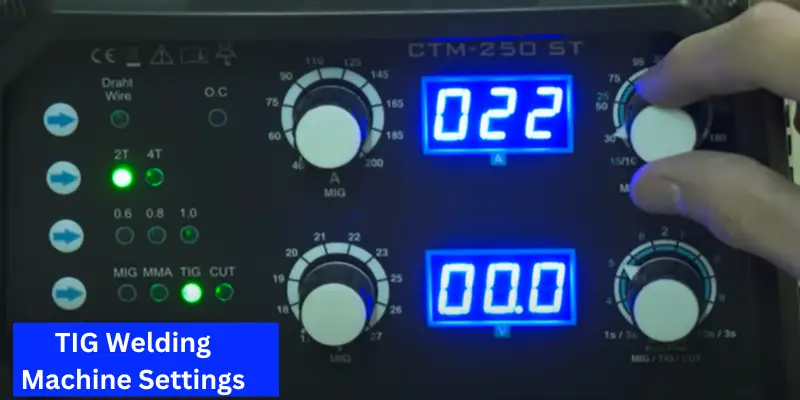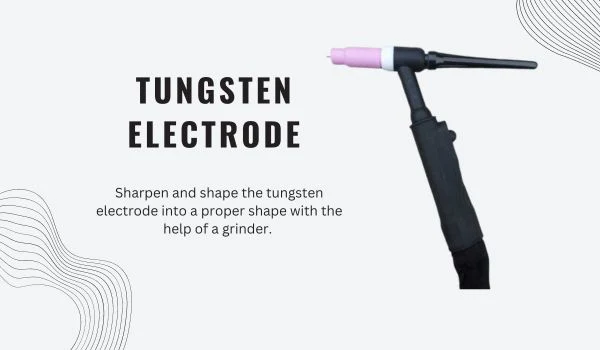What is TIG Welding & How Does it Work? Benefits & Equipment (Detail Guide)
Updated: 6 Mar 2024
55
TIG welding (Tungsten Inert Gas) is considered one of the best welding processes in this new universe of metal manufacturing, known for its flexibility and artfulness. In the art of accurate welding, TIG is on the top, above them all.
GTAW stands for Gas tungsten arc welding, also known as TIG welding. In this welding system, the whole process is based on consumable electrodes that are reasonable for its welds. For its protection against contamination, it uses pure argon gas, which can also be changed according to the situation.
Moreover, TIG welding is vital in all development foundations because of its spotless, exact, and stylishly engaging welds. All of the newcomers and beginners in the welding industry should focus on getting into Tig welding because it’s the future. The article below explains the welding process with tig in full detail.
What is TIG Welding? Let’s Explain in Detail:
As you probably know, welding is one of the fundamental processes in almost every metal fabrication, which has a lot of different techniques; some are easy, while others are tough and precise. There are many welding systems worldwide, but Tungsten inert gas welding is considered the best due to its versatility and accuracy.

© Weldingvilla.com – Image usage rights
Tungsten inert gas became one of the most used welding processes for its finesses and accuracy. The TIG welding process has a non-consumable electrode that is responsible for its welding arc, which mostly relies on gas.
As you may notice, this process uses gas to prevent the weld from contamination. The gas combines Argon and hydrogen, but mostly, it is pure Argon, which shields the weld from different atmospheric contamination and helps build the weld strong.
How TIG Welding Works:
The process of TIG welding is very simple and easy. Take an electrode, and it will form an electric arc, forming a weld bubble between the electrode and the workpiece. You can start the arc by either scratch start or Lift arc.
But when the arc is created, it gets heated very quickly, which then melts the base metal and creates a weld, actually a molten pool, which turns into a weld when it cools down.
You don’t need any flux in this process, ensuring you have a clean and precise weld. After that, the welder introduces and uses the filler material to fill or fix the joint according to your needs.

© Weldingvilla.com – Image usage rights
Advantages of TIG Welding:
The TIG is one of the best welding processes and is widely spread in almost all the welding industry, providing many advantages. Below, we define some of the benefits of TIG welding, so follow along.
Cleanliness and Precision:
You may probably know this, but Tig Welding is one of its kind that is known for its precise and clean welds. It also gives you full control over the welding process, which you then use for minimal spatter but helps you get the best quality weld.
Versatility:
The TIG welding is very versatile in its output and the material it uses. Tig welding uses many materials like stainless steel, copper, aluminum, and other alloys. The adaptability of Tig welding according to different materials makes it a preferred choice for various working industries.
No Flux Needed:
It also discussed that TIG welding doesn’t need any flux for its welding process. Basically, flux is required for a welding process to protect it from atmospheric contamination, but not TIG welding. Don’t worry; the weld getting from this process in the absence of flux will also be clean.
Suitable to Thin Materials:
Most welding is not suited for thin materials; instead of fixing it, it damages the material. But not TIG welding because it is designed and made for thin material to weld it. You can use this welding process on almost every thin material, no matter how delicate and precious it can be, because it will work without causing excessive distortion.
Best for Intricate Designs:
Most welding processes don’t have the ability to control your weld to do detailed welding. At the same time, TIG welding is one of the best welding processes in which you can make excellent, intricate designs where crucial aesthetics are important.
Controlled Heat Input:
In the process of TIG welding, you can control input heat, which prevents a lot of delicate materials from permanent damage. So, if you feel any risk of overheating or damaging your thin materials, then don’t worry; you will do just fine with TIG welding.
Minimal Spatter:
If you like your environment to be clean, consider choosing TIG welding because it causes less spatter during welding. That’s why it’s recommended by a lot of welders for clean welds.
Disadvantages of TIG welding:
Just like advantages, TIG welding also has disadvantages, which you should know for better. The drawbacks are given below, so read it properly.
Complexity and Skill Requirements:
As you already know, TIG welding requires proper training and certification because it is very complex and needs proper welding skills. Due to the complex TIG welding process, you can only access it with the proper skills. Beginners also can’t do this welding process because they hurt themselves and ruin the workpiece.
Slower Process:
The process of TIG welding is more accurate but very slow compared to other welding processes. So, if you want to get your weld done faster, tig welding is not for you because it takes longer to process, especially for longer projects.
Expensive:
TIG welding costs are considered to be very high compared to other processes. The TIG welding machine itself is costly; it is one of the most expensive of all the welding processes. That’s why TIG welding should not be considered if you don’t have an initial investment.
Limited Portability:
TIG welding has limited portability compared to MIG and stick welding. It has limited portability because of its machines and accessories, which are very hard to carry from one place to another.
Limited for Think Materials:
TIG welding is versatile, but it is mainly used and recommended for thin materials because of its efficiency toward thin materials. You can use thick materials, but those are also less efficient than those thin materials. Also check the below video to get done the TIG welding proecss in 20 minutes.
TIG Welding Equipment:

© Weldingvilla.com – Image usage rights
A standard TIG welding equipment includes a basic welding machine, which is usually pretty heavy. Next, it has a welding torch, which creates an arc, and then there is shielding gas, which prevents the entire welding process from contamination and is mainly composed of argon gas, also called TIG gas welding.
These are the essential TIG welding equipment, but other than that, TIG welding has additional accessories, which include foot pedals to control amperage, Filler materials, and a TIG welding toolkit.
FAQs:
What is the difference between MIG and TIG welding?
MIG welding uses a consumable electrode with a shielding gas combination of hydrogen and Argon, while TIG welding uses non-consumable electrodes with shielding gas only of Argon. MIG welding is considered cheap, while TIG welding is very expensive.
Does TIG welding require gas?
Yes, TIG welding requires gas, which is purely Argon. It needed gas to protect the welding pool from environmental contamination.
Which welding is strongest?
All of the welding is considered strong, but in all of these, TIG welding is very strong because it produces some of the strongest weld, which has high tensile strength and flexibility.
Why use TIG instead of MIG?
Most of the time, people, especially welders, use TIG welding instead of MIG welding because it is precise, clean, and strong compared to MIG.
Why are TIG welders so expensive?
Many reasons make TIG welding expensive, and precision and clean welding are some of the main reasons why it’s costly.
Ending Points:
TIG welding is considered the pinnacle of the Welding world and is famous for its versatility and cleanliness. It consists of non-consumable electrodes, which create some of the cleanest and highest-standard welds in the presence of Argon shielding gas. It is mainly used in the construction industry, specifically in aerospace and delicate artwork.
I hope you understand this topic, but if you have any questions, ask in the comment section, and I will get back to you.
Please Write Your Comments